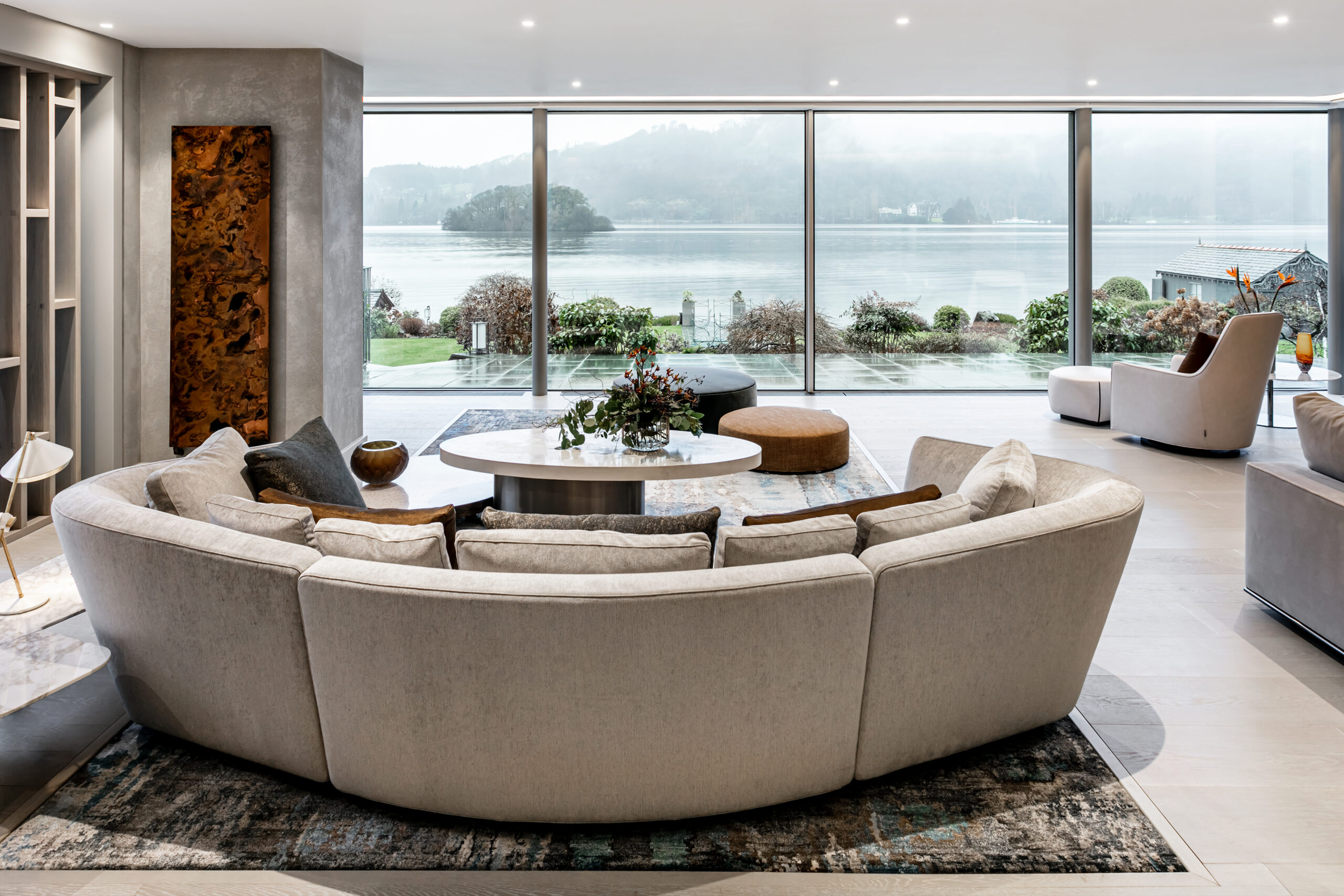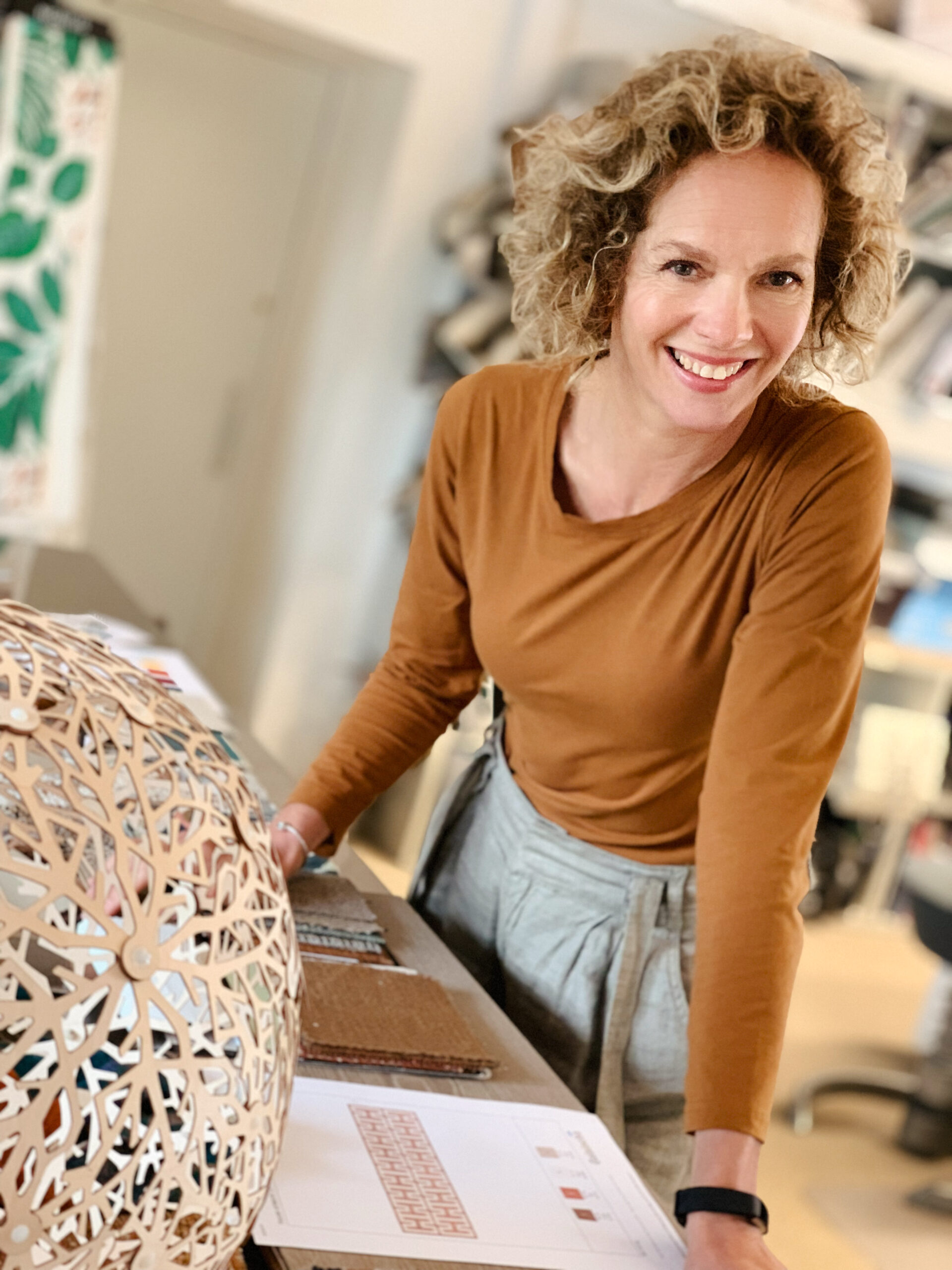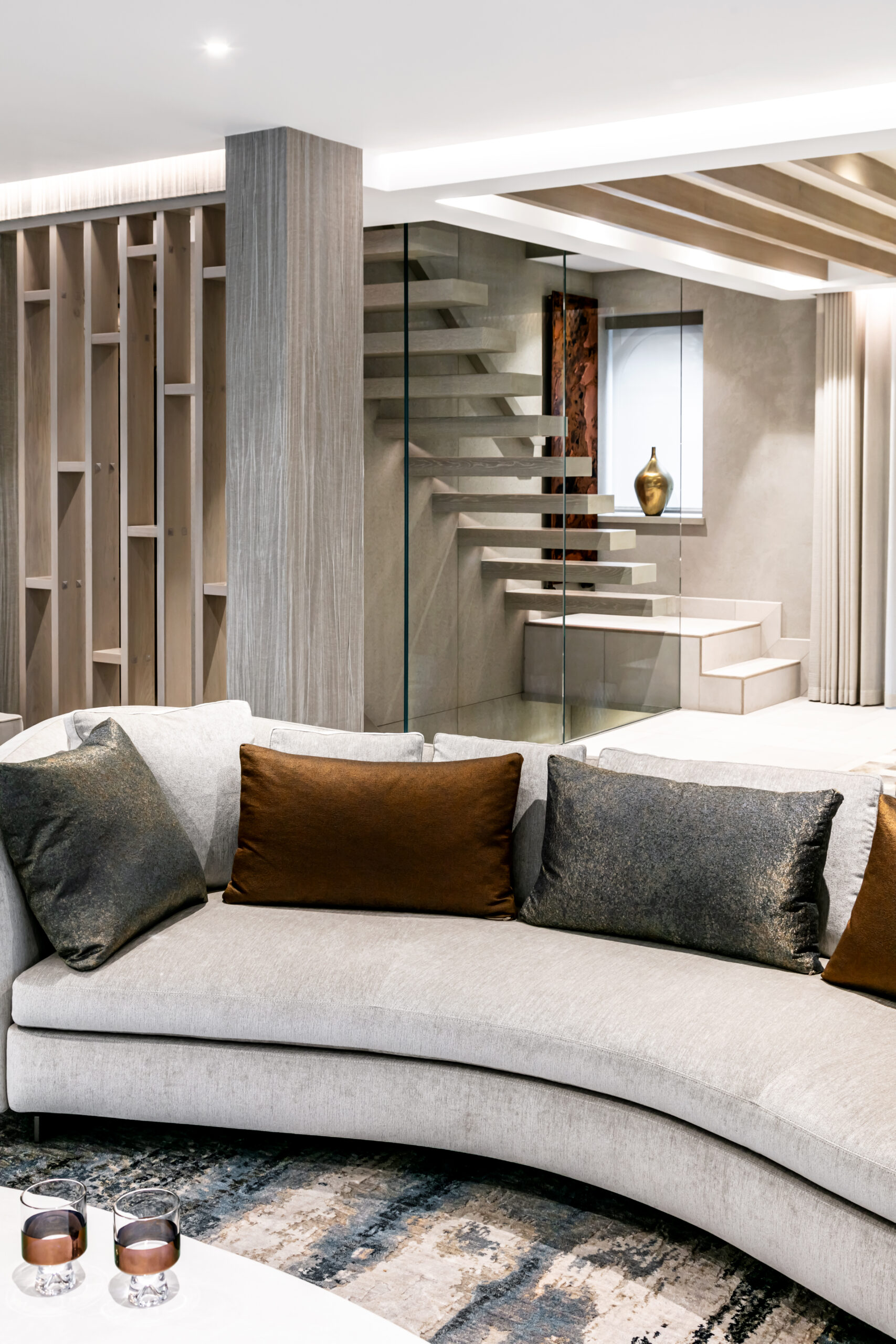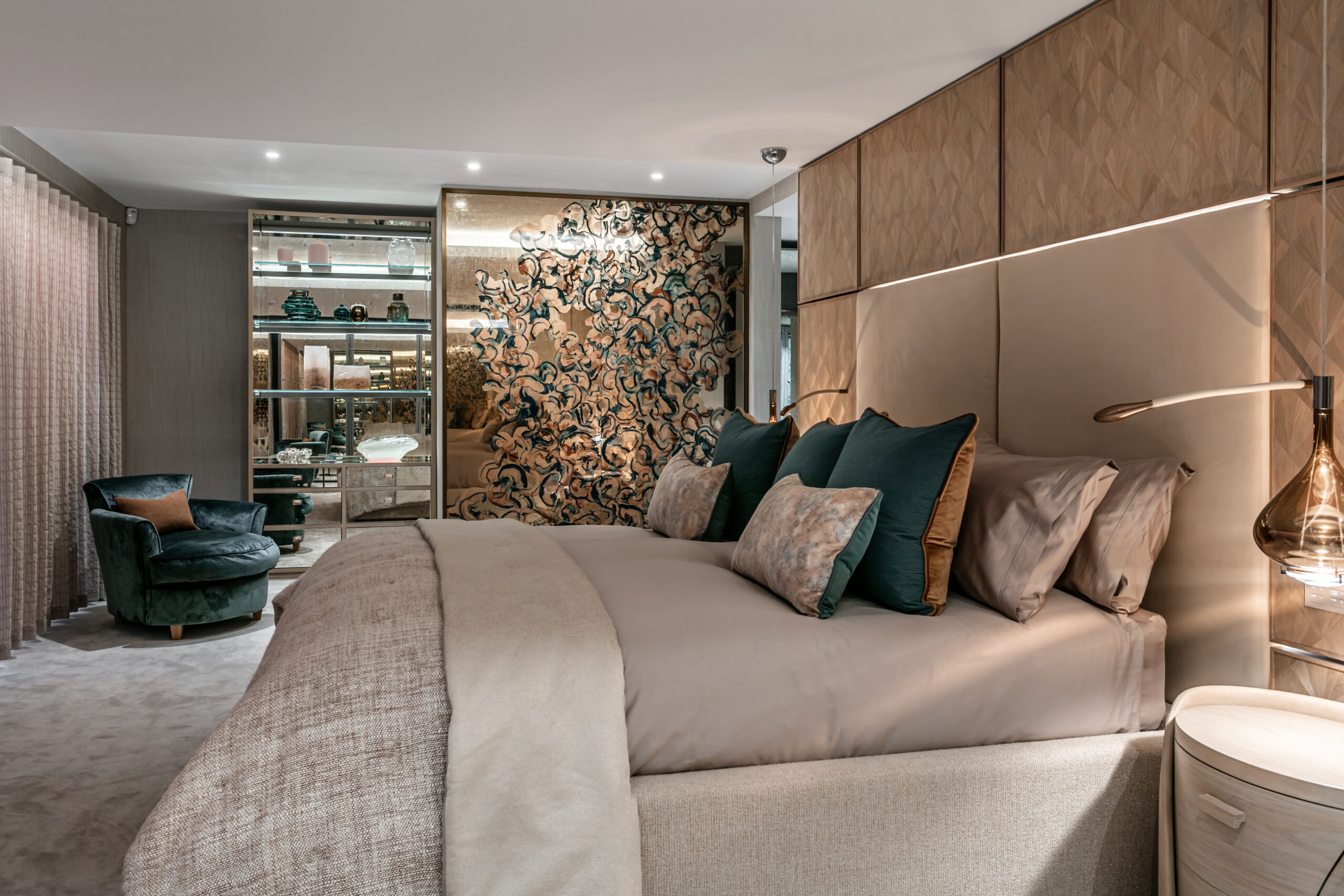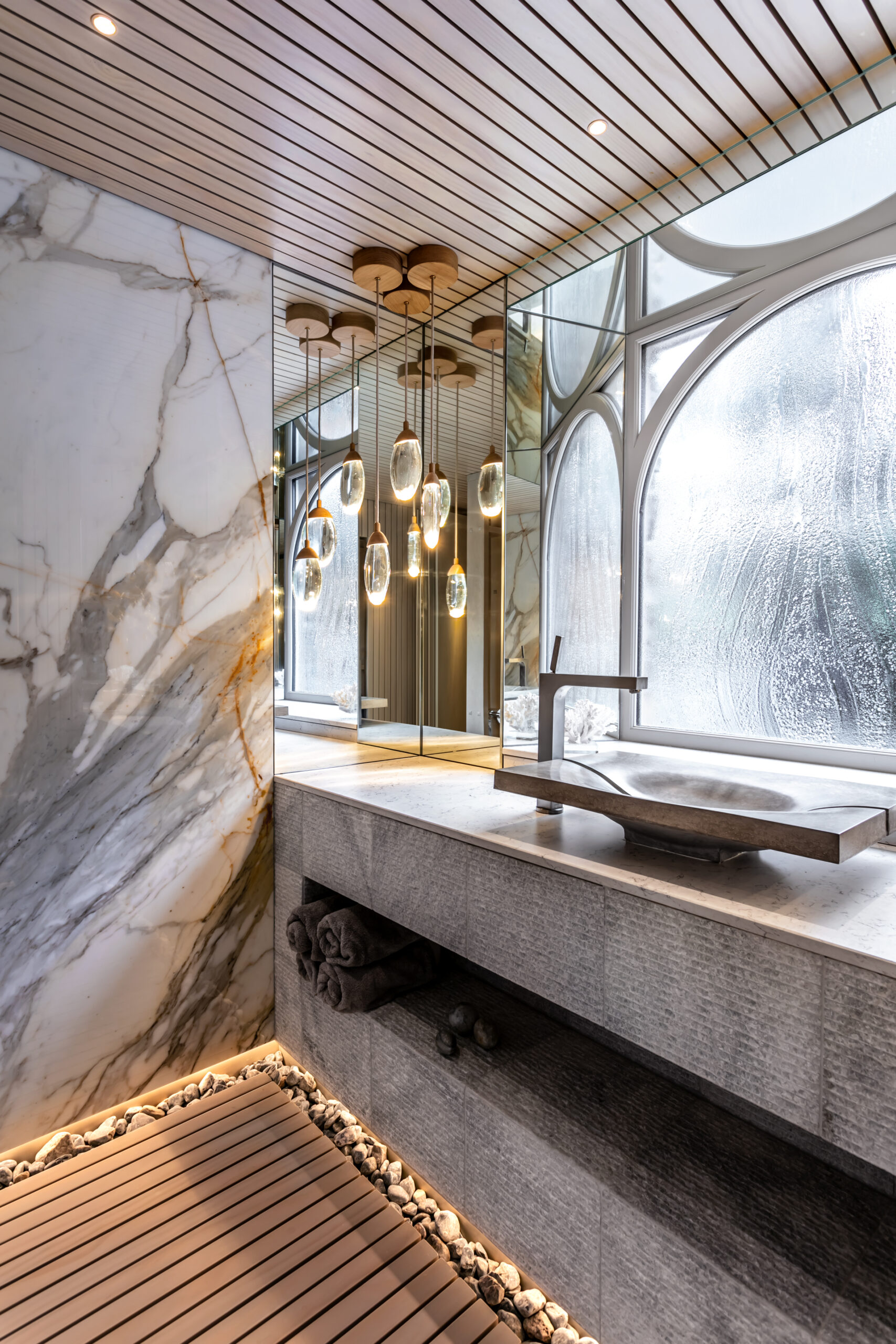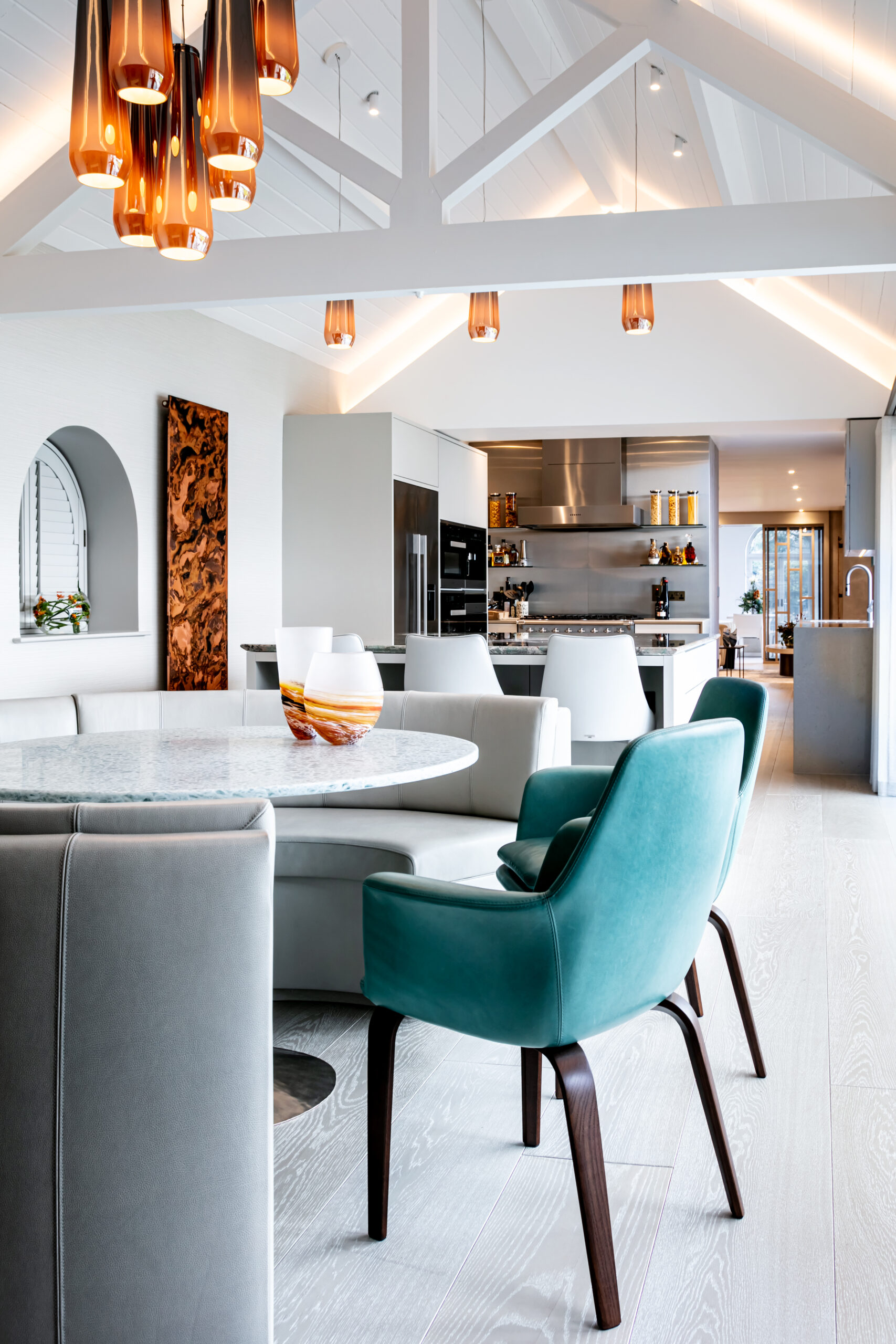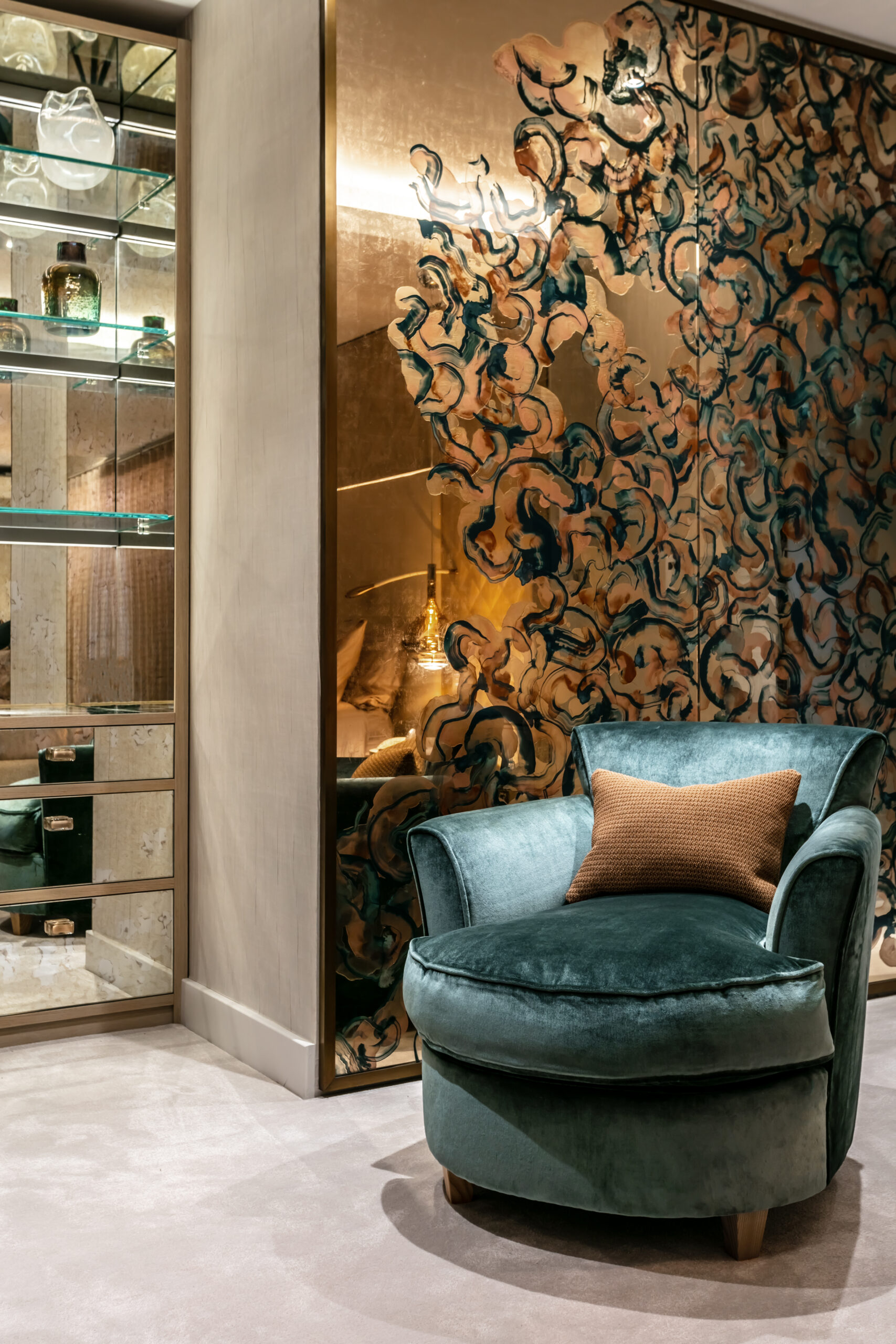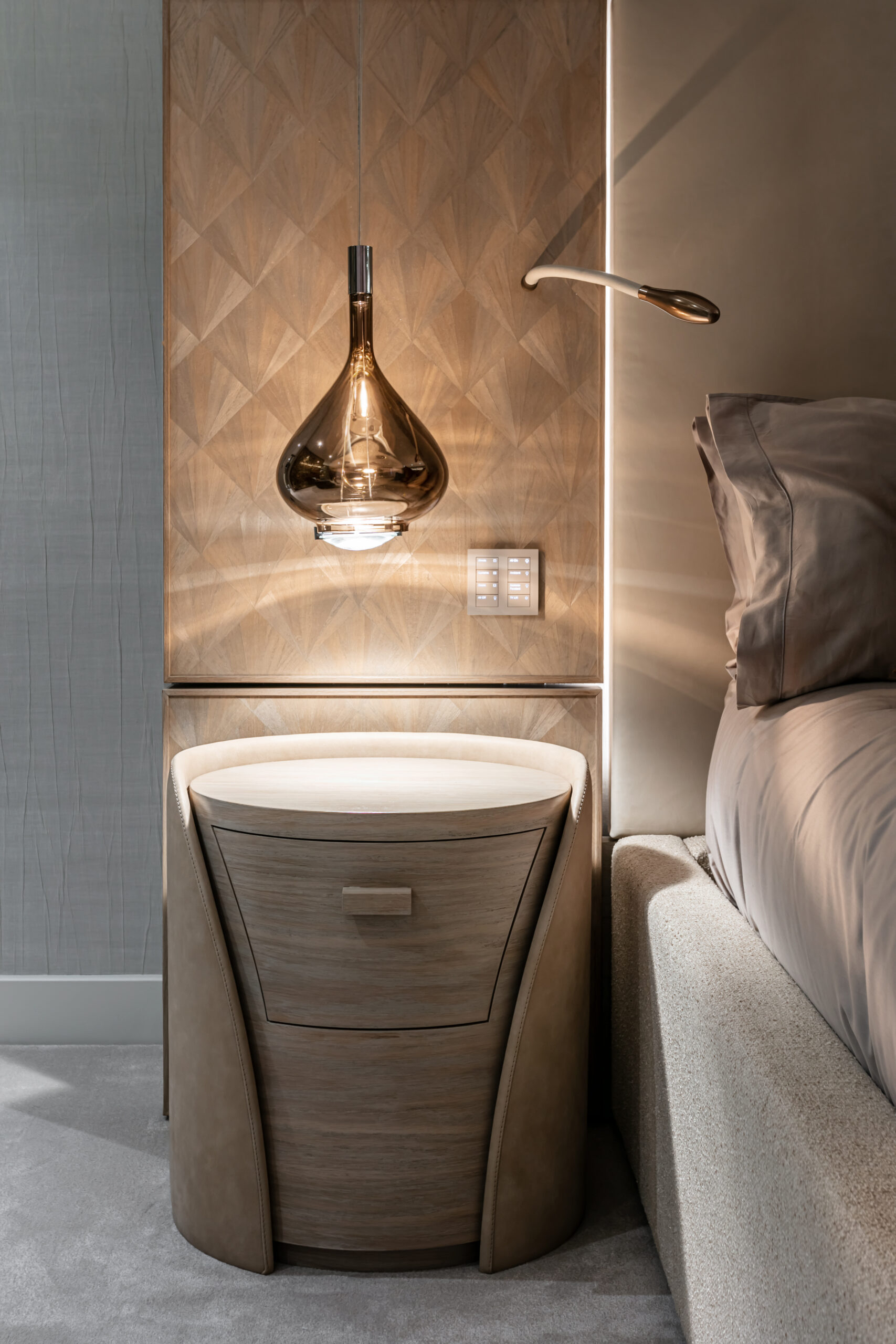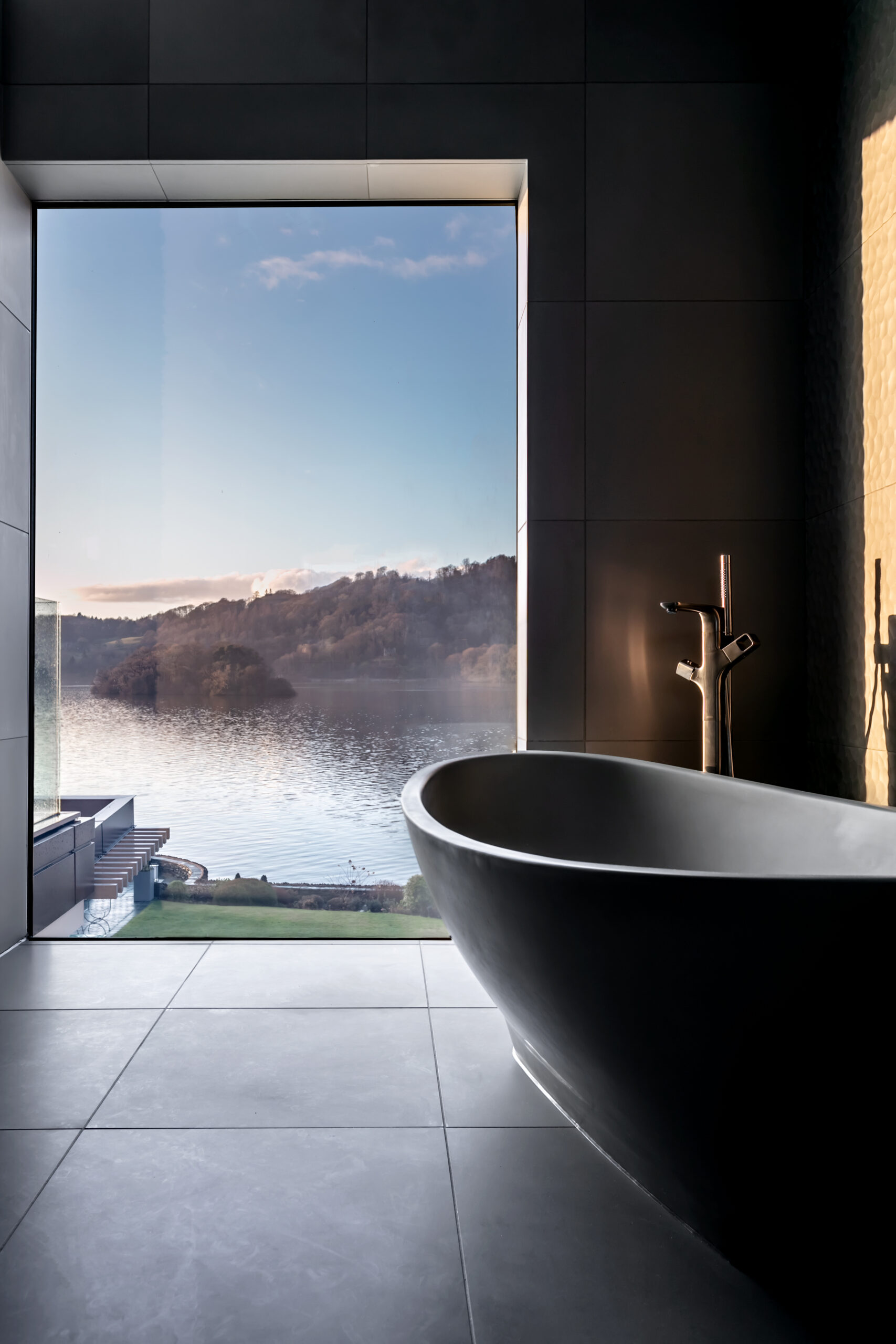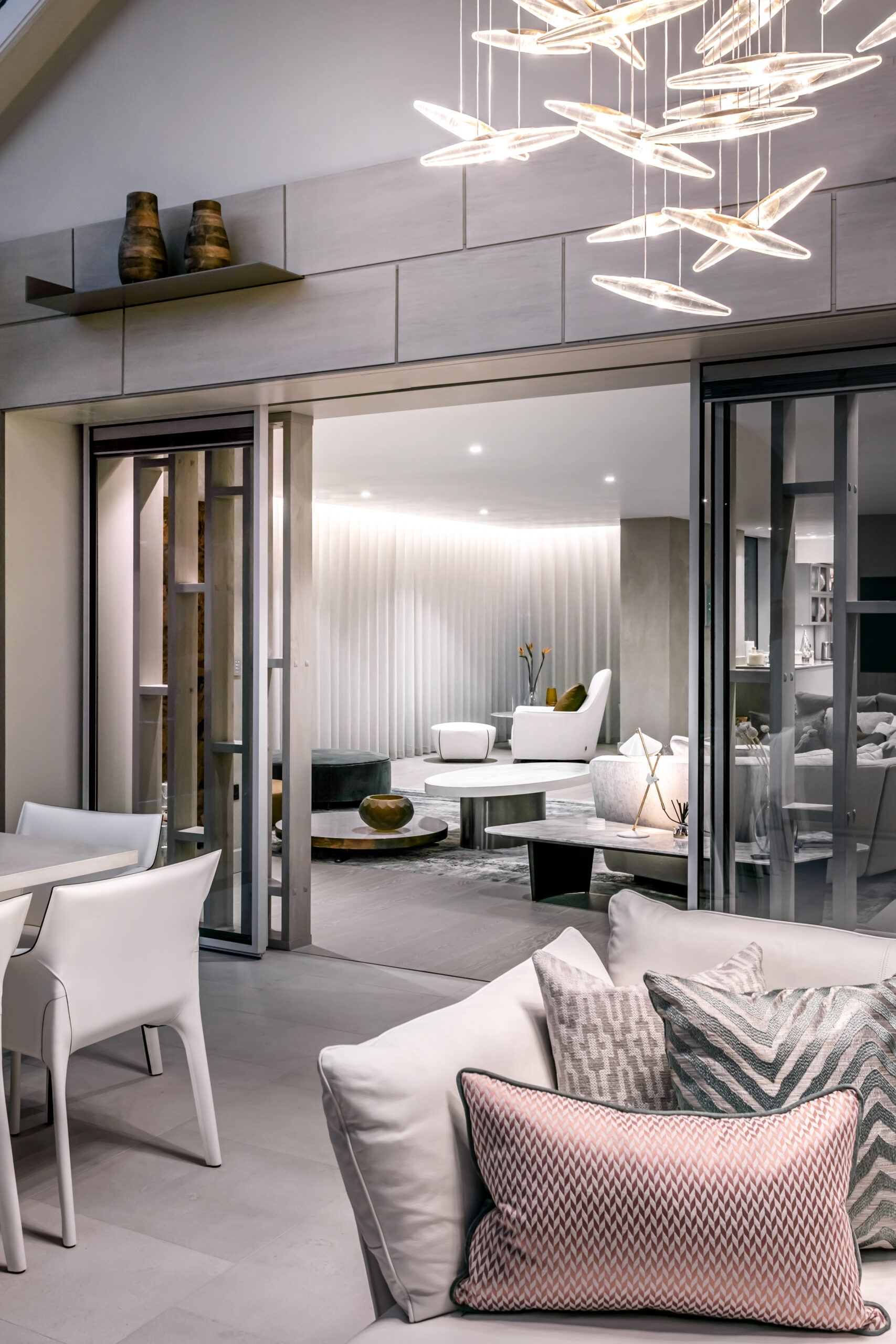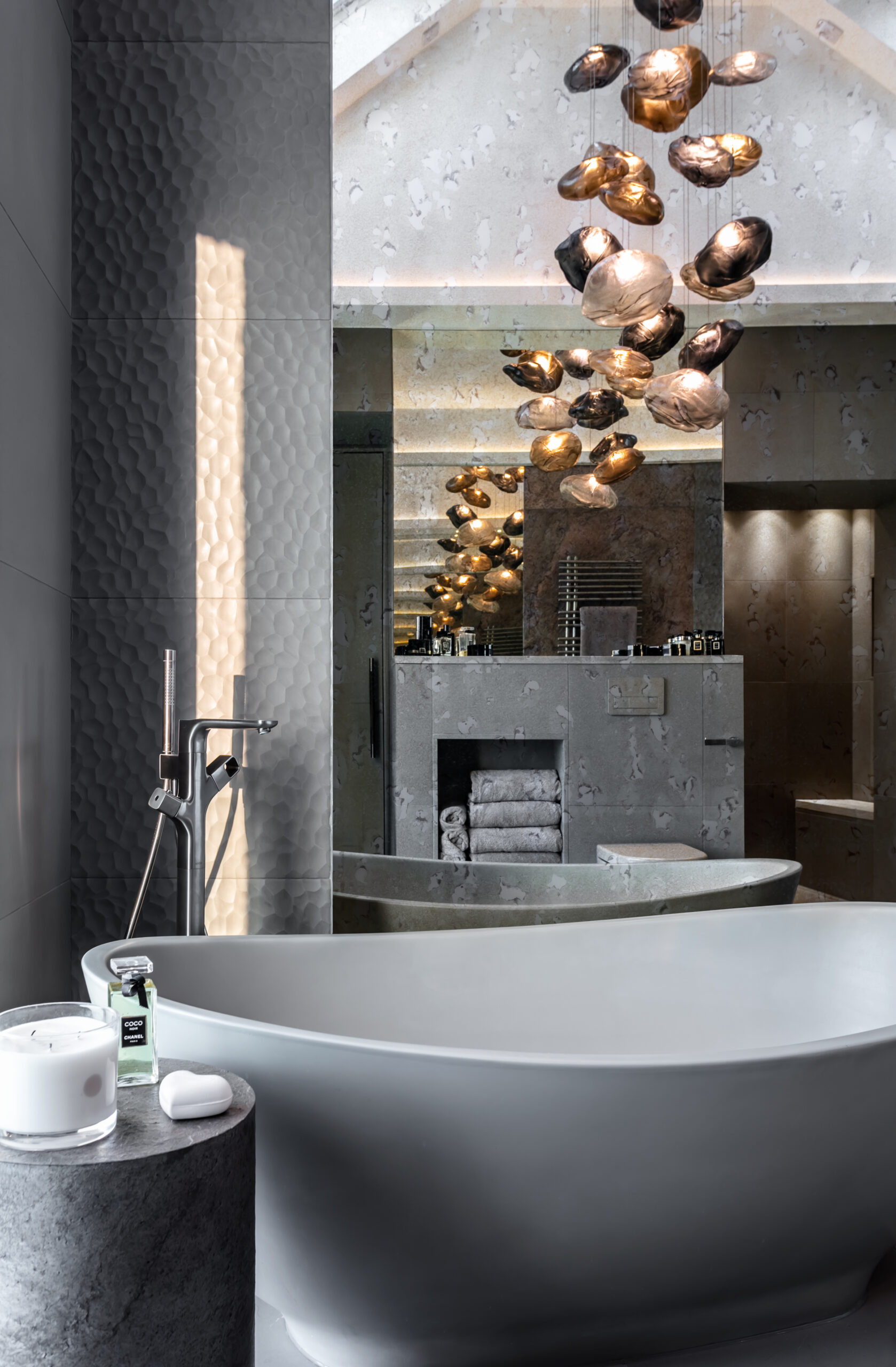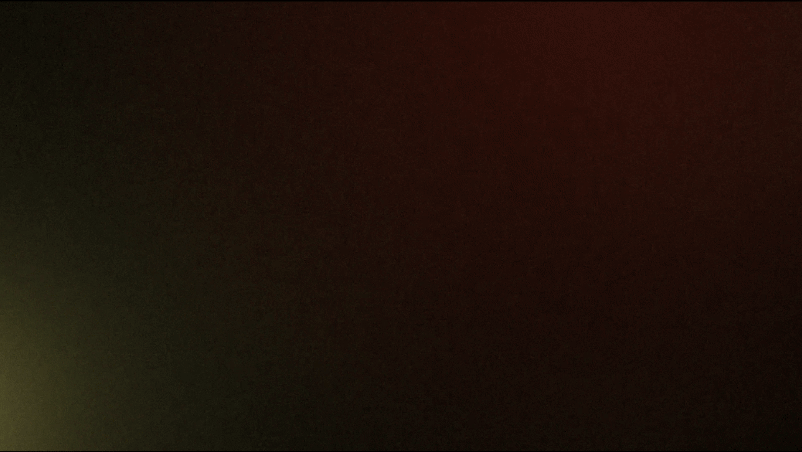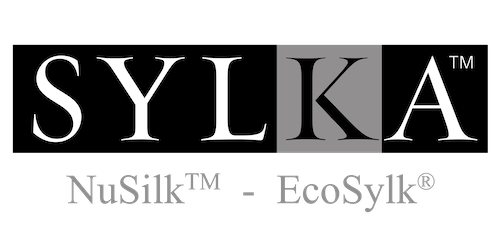In what direction do you feel that design is moving towards in a general sense?
Looking forward, the integration of sustainability and climate-conscious decisions in interior design is more critical than ever. As designers, we are increasingly aware of our responsibility to respect and incorporate natural elements in our work. Sustainable sourcing of materials such as timbers and natural stones is essential in ensuring that the environmental impact of our designs is minimized. While marble and granite are currently on trend, we must also explore alternatives in reconstituted or reformulated products that can offer similar visual and tactile qualities with a lesser ecological footprint. These choices are not just about sustainability but also about managing the costs and logistical challenges associated with transportation and availability. By sourcing materials closer to home, we can reduce project costs, minimize lead times, and contribute to a more localized, sustainable economy.
The growing awareness around mental health and well-being is shaping how interiors are designed to enhance personal wellness. People are increasingly seeking spaces that foster a sense of calm and promote mental clarity, leading to a rise in demand for full sensory design. Elements such as natural light, acoustic treatments, and thoughtful zoning for spaces like gyms, spas, and home office breakouts are becoming integral. As designers, we must manage these elements with care, as even the most luxurious interiors can fail if acoustic management, space flow, and sensory experiences are not thoughtfully executed.
The evolving expectations of consumers further highlight the importance of meeting both functional and aesthetic demands. As clients become more discerning due to growing wealth and exposure to global trends, managing their expectations is becoming a more complex process. The current economic instability adds a layer of urgency to delivering value and worth in every design choice. Clients are not only looking for visually stunning spaces but also seeking value in longevity and functionality. As technology rapidly advances, incorporating smart home systems and automated features is becoming standard—but these systems must be selected with long-term performance and ease of use in mind. Balancing cutting-edge design with user-friendly technology remains a challenge, especially for older generations who may find these advancements difficult to navigate.
The impact of the Covid-19 pandemic has also transformed the way people view their work environments. The demand for flexible working hours and home-office setups has led to a shift in how spaces are used and designed. However, in the world of interior design, collaboration remains vital. While working remotely may suit some industries, the shared creative energy and expertise found in physical workspaces are invaluable to the design process. For us, the future of interior design depends on continued collaboration, both within teams and with clients, to nurture community, uphold standards of excellence, and deliver spaces that truly resonate.
In summary, the future of interior design lies in balancing sustainability, technology, well-being, and personalized client experiences. As we face the challenges of a rapidly changing world, our ability to adapt while maintaining integrity, value, and collaboration will shape the success of our work in the years to come.
Name five key themes to consider when approaching design in the future.
When considering the future of interior design, there are five key themes that must guide our approach, blending responsibility, creativity, and innovation. Here is a summary of each:
1. Sustainability and Climate Change: As environmental concerns continue to rise, it’s essential that designers prioritize sustainability in sourcing materials and products. Choosing locally sourced, sustainable, and eco-friendly options reduces our carbon footprint and supports responsible manufacturing practices. It is crucial to consider how design decisions impact the environment, from minimizing transportation to selecting materials that limit waste, offer longevity and encourage a circular economy.
2. Wellbeing and Mental Health: Designing spaces that promote physical and mental health is more important than ever. We need to create environments that support a sense of calm, balance, and harmony. By incorporating elements like natural light, acoustic treatments, and biophilic design (bringing nature indoors), we can positively affect mental wellbeing. Every space, whether a home, workplace, or hospitality setting, must foster an atmosphere of comfort and tranquillity, supporting the user’s emotional and physical needs.
3. Workplace Adaptation and Home Working: The shift to home-based working, accelerated by the COVID-19 pandemic, has reshaped expectations around office and home spaces. Designers must navigate the challenges of creating functional, flexible, and cohesive environments that support productivity and work-life balance. Junior designers also require robust training in brand awareness and quality standards, which may complicate project delivery. It’s important to integrate solutions that promote collaboration and maintain the integrity of the design vision, even in a remote work setting.
4. Managing Client Expectations: Clients are becoming more discerning and have increasingly high expectations. Managing these expectations from concept to completion requires clear communication and careful planning. Designers must align their vision with clients’ lifestyles, anticipating their evolving needs and desires. It’s crucial to keep up with design trends, technology advancements, and budgeting constraints while maintaining transparency about the realities of lead times, costs, and the potential limitations of available materials.
5. Technology Integration: As technology continues to evolve, interior designers must integrate smart systems and services—such as lighting, audio, and security—into their projects without compromising aesthetics. This requires early collaboration with specialists and contractors to ensure that these elements enhance the user experience and blend seamlessly into the overall design. Clients should be well-informed about the role technology plays in their home’s functionality and how it impacts the management of their space.
By thoughtfully addressing these themes, interior designers can create spaces that are not only aesthetically pleasing but also sustainable, healthy, and future-ready.
